- Home
- Dan Simmons
Worlds Enough & Time Page 18
Worlds Enough & Time Read online
Page 18
Watching the ocean change is a lifelong vocation, but so is living in sight of serious mountains. The high peaks are never the same from hour to hour, much less from day to day. From the windows of my full-time home and office in a small town on the high prairie some ten miles from the foothills, I watch the moods of the mountains. The sunlight is different here in Colorado, richer, harsher, since even at just my hometown’s altitude of 5,300 feet, we are above almost half of the Earth’s atmosphere, and often the light plays pointtillist tricks with the snowfields and trailing vegetation and gray granite visible above treeline to the west. The forests of pine and fir below treeline glow lichen-green one second and glower brooding-black the next. Clouds pile thirty thousand feet high along the line of peaks as they try to carry their weight of moisture from the west side of the Divide to the dryer east. That cloud-dam accumulates high and white, curling even higher upon itself in its daylong attempt to spill over the Divide. There’s a certain pleasant tension in waiting for this cloud-tsunami to spill over onto the high plains, and on summer days it does so almost every afternoon, sending storms dragging along the prairie or simply releasing herds of puffy cumulus parading eastward like so many sheep against the blue. The Continental Divide is our weather-maker here in the same way that Lake Erie was when I lived in Buffalo, New York, responsible for everything from rare, rainy upslope conditions that leave us entombed in fog and rain for days, to the snow-eating Chinook winds in the winter that blow down from the northwest to raise temperatures forty degrees in an hour.
Look once and the high peaks twenty-five miles west are crystal clear, stone-sharp, knife-edge bold—from my office window I can see from the Mummy Range in Wyoming sixty miles to the north to Pikes Peak a hundred and twenty miles to the south—but look again a few hours later and the peaks and foothills are layers of shade, patterns of subtlety, as muted and soft as any Japanese watercolor.
I’ve written a bit about mountains. In my science fiction novel The Rise of Endymion I have a world where the lower atmosphere is poisonous and acidic, and the human colonists must live on the hundreds of high peaks and ridgelines and pinnacles rising above the deadly soup. The world is called T’ien Shan—the Mountains of Heaven—and at one point my narrator-character, Raul Endymion, lists many of those mountain realms, all named after sacred peaks on Earth or legends of high peaks and their divine or monstrous inhabitants. The list was fun for me to share—Harney Peak (Black Elk’s “center of the universe”), Nanda Devi where the Yellow Goddess of Bliss is said to dwell; Muztagh Alta where thousands of Islam’s faithful guard the tombs of Ali and the other saints of Islam; Chomo Lori, “Queen of the Snow”; Helgafell—the Mead Hall of the Dead—shrouded in white glaciers; Demchog, the Buddhist peak, meaning “One of Supreme Bliss”—and so on. It was so much fun to list these sacred high places that I was sure that my editor would round on it, ready to cut it, appalled at its redundancy. She was and did. I didn’t. What’s the value of being a novelist if one can’t indulge in such asides from time to time?
The truth is that most real mountains on Earth are sacred to someone—often to many peoples at once—but those tribes and villagers and holy men who hold the high peaks sacred never climb the damned things. Too holy. Too far away. Too deadly. Besides, something climbed and “conquered” loses its aura of sacred power (except to those who have climbed it.)
The oceans of the world are deadly—we have to feed our seas to earn the right to sail on them or live near them—but one can weave metaphors of a mother’s warm embrace during a burial at sea; death in the mountains is invariably cold and lonely.
My real reasons for writing “On K2 with Kanakaredes” are—as with all works of fiction—varied and probably neither fully understood nor worth the effort of pursuing, but my motive for writing the story was simple enough. During my teaching stint at the Odyssey Writers’ Workshop in the summer of 2000, I ran across several adult students who could really write. One of them, a former lawyer named Laura Whitton, had an almost-realized story that I found so compelling I recommended it to editor Al Sarrantonio, who had recently contacted me about contributing to a major anthology called Redshift. I hadn’t planned to write a short piece for Al’s anthology—as much as I love short fiction, I write little of it because of the deadlines and demands of my novels, screenplays, and other longer projects—but when he accepted Ms. Whitton’s story, “Froggie Dreams,” it seemed only polite that I should write a story for him.
K2 has always been known as an especially deadly mountain and I’ve always wanted to trek in to the base of it. But the closest I’ve gotten to the Himalayas or the Karakoram was a nightmare few days and nights in Calcutta more than twenty years ago, so I had to resort to research and the memories of climbers’ tales. I set aside a week (well, it was the week before Al’s deadline) to write this story, and the first thing I did was to decide on the route up K2 and the mountaineering techniques my characters would use to climb the peak. The route chosen for the story is common enough, the techniques less reliant on technology than a lot of Himalayan climbs are today. (This is the nice paradox about truly advanced technology—it allows outdoors people to get back to basics.)
The characters use an “alpine-style ascent,” which is coming more and more into vogue with the exceptionally bold and fit climbers in the Himalayas and Karakoram at the beginning of the 21st Century. An alpine ascent is the classic go-for-it climb used on lower peaks—demanding very little in the way of logistics or materiel or time—as opposed to the more traditional pyramid-style attempt on an 8,000-meter peak, starting with dozens or even hundreds of load-bearers and climbers, moving up and down the ascent route repeatedly on fixed ropes, establishing camp above camp while moving materiel ever higher, and finally sending only a few climbers from the highest camp on a dash for the summit. With alpine-style ascents, everyone goes for the top. It’s all or nothing and a few days of storm—being pinned down on a ridge near 24,000 feet—means death for everyone. Such alpine ascents offer less time to acclimate but also demand less time spent in the Death Zone. Any mountain rising to 8,000 meters or more (you’ll notice that I mix both metric units and English units in the story, as do many veteran American and English climbers I’ve known) demands the mountaineers risk the Death Zone, a hostile, alien region filled not only with terrible winds, lunar cold, and the worst objective dangers a mountain can offer, but also with the inevitability of oxygen-starvation, severely reduced mental capacity, and the probability of embolisms and blood clots in the lungs. One element common to climbers’ tales at that altitude is the sense that there are other, nonworldly climbers on the rope, ghosts climbing with you even on a solo ascent. Climber after climber—from Mallory’s day to the present—have come down to lower camps only to report long conversations with climbers who were not there, or who had died days or decades before. Human beings did not evolve to work and function at such altitude and—as it turns out—neither did the “mantispid” alien in our tale.
I’ve rarely used nonhumanoid aliens in my fiction, so it was fun designing both Kanakaredes and his home world. Somewhere in my stacks and piles of documents here, I have a drawing—a diagram, really—of Kanakaredes and his ilk, and if I can find it, I’ll end this introduction with it. (If I can’t find the sketch, you’ll just have to go on imagining Kanakaredes, which—I suspect—is better anyway.)
The Bugs, for their purposes in this story, might just as well have sent their emissary to join three human friends who were planning to sail around the world in a small boat. The risks would have been as great. The test, if test it is, would be as real. I wish I could start this story over, or write its twin, with just that premise, and revel in the research and aesthetics of sailing the open ocean as I did with the dangers of K2.
As Wordsworth wrote—
Two voices are there: one is of the sea,
One of the mountains; each a mighty voice.
ON K2 WITH KANAKAREDES
The South Col of Everest, 26,200
feet
IF we hadn’t decided to acclimate ourselves for the K2 attempt by secretly climbing to the 8,000-meter mark on Everest, a stupid mountain that no self-respecting climber would go near anymore, they wouldn’t have caught us and we wouldn’t have been forced to make the real climb with an alien and the rest of it might not have happened. But we did and we were and it did.
What else is new? It’s as old as Chaos theory. The best-laid plans of mice and men and so forth and so on. As if you have to tell that to a climber.
Instead of heading directly for our Concordia Base Camp at the foot of K2, the three of us had used Gary’s nifty little stealth CMG to fly northeast into the Himalaya, straight to the bergeschrund of the Khumbu Glacier at 23,000 feet. Well, fly almost straight to the glacier; we had to zig and zag to stay under HK Syndicate radar and to avoid seeing or being seen by that stinking prefab pile of Japanese shit called the Everest Base Camp Hotel (rooms U.S. $4,500 a night, not counting Himalayan access fee and CMG limo fare.)
We landed without being detected (or so we thought), made sure the vehicle was safely tucked away from the icefalls, seracs, and avalanche paths, left the CMG set in conceal mode, and started our Alpine-style conditioning climb to the South Col. The weather was brilliant. The conditions were perfect. We climbed brilliantly. It was the stupidest thing the three of us had ever done.
By late on the third afternoon we had reached the South Col, that narrow, miserable, windswept notch of ice and boulders wedged high between the shoulders of Lhotse and Everest. We activated our little smart tents, merged them, anchored them hard to ice-spumed rock, and keyed them white to keep them safe from prying eyes.
Even on a beautiful late-summer Himalayan evening such as the one we enjoyed that day, weather on the South Col sucks. Wind velocities average higher than those encountered near the summit of Everest. Any high-climber knows that when you see a stretch of relatively flat rock free of snow, it means hurricane winds. These arrived on schedule just about sunset of that third day. We hunkered down in the communal tent and made soup. Our plan was to spend two nights on the South Col and acclimate ourselves to the lower edge of the Death Zone before heading down and flying on to Concordia for our legal K2 climb. We had no intention of climbing higher than the South Col on Everest. Who would?
At least the view was less tawdry since the Syndicate cleaned up Everest and the South Col, flying off more than a century’s worth of expedition detritus—ancient fixed ropes, countless tent tatters, tons of frozen human excrement, about a million abandoned oxygen bottles, and a few hundred frozen corpses. Everest in the 20th Century had become the equivalent of the old Oregon Trail—everything that could be abandoned had been, including climbers’ dead friends.
Actually, the view that evening was rather good. The Col drops off to the east for about 4,000 feet into what used to be Tibet and falls even more sharply—about 7,000 feet—to the Western Cwm. That evening, the high ridges of Lhotse and the entire visible west side of Everest caught the rich, golden sunset for long minutes after the Col moved into shadow and then the temperature at our campsite dropped about a hundred degrees. There was not, as we outdoors people like to say, a cloud in the sky. The high peaks glowed in all of their 8,000-meter glory, snowfields burning orange in the light. Gary and Paul lay in the open door of the tent, still wearing their thermskin uppers, and watched the stars emerge and shake to the hurricane-wind as I fiddled and fussed with the stove to make soup. Life was good.
Suddenly an incredibly amplified voice bellowed, “You there in the tent!”
I almost pissed my thermskins. I did spill the soup, slopping it all over Paul’s sleeping bag.
“Fuck,” I said.
“Goddamn it,” said Gary, watching the black CMG—its UN markings glowing and powerful searchlights stabbing—settle gently onto small boulders not twenty feet from the tent.
“Busted,” said Paul.
Hillary Room, Top of the World, 29,035 feet
Two years in an HK floating prison wouldn’t have been as degrading as being made to enter that revolving restaurant on the top of Everest. All three of us protested, Gary the loudest since he was the oldest and richest, but the four UN security guys in the CMG just cradled their standard-issue Uzis and said nothing until the vehicle had docked in the restaurant airlock-garage and the pressure had been equalized. We stepped out reluctantly and followed other security guards deeper into the closed and darkened restaurant even more reluctantly. Our ears were going crazy. One minute we’d been camping at 26,000 feet and a few minutes later the pressure was the standard airline equivalent of 5,000 feet. It was painful, despite the UN CMG’s attempt to match pressures while it circled the dark hulk of Everest for ten minutes.
By the time we were led into the Hillary Room to the only lighted table in the place, we were angry and in pain.
“Sit down,” said Secretary of State Betty Willard Bright Moon.
We sat. There was no mistaking the tall, sharp-featured Blackfoot woman in the gray suit. Every pundit agreed that she was the single toughest and most interesting personality in the Cohen administration, and the four U.S. Marines in combat garb standing in the shadows behind her only added to her already imposing sense of authority. The three of us sat, Gary closest to the dark window wall across from Secretary Bright Moon, Paul next to him, and me farthest away from the action. It was our usual climbing pattern.
On the expensive teak table in front of Secretary Bright Moon were three blue dossiers. I couldn’t read the tabs on them, but I had little doubt about their contents: Dossier #1, Gary Sheridan, 49, semiretired, former CEO of SherPath International, multiple addresses around the world, made his first millions at age seventeen during the long lost and rarely lamented dot-com gold rush of yore, divorced (four times), a man of many passions, the greatest of which was mountain climbing; Dossier #2, Paul Ando Hiraga, 28, ski bum, professional guide, one of the world’s best rock-and-ice climbers, unmarried; Dossier #3, Jake Richard Pettigrew, 36, Boulder, Colorado, married, three children, high school math teacher, a good-to-average climber with only two 8,000-meter peaks bagged, both thanks to Gary and Paul, who invited him to join them on international climbs for the six previous years. Mr. Pettigrew still cannot believe his good luck at having a friend and patron bankroll his climbs, especially when both Gary and Paul were far better climbers with much more experience. But perhaps the dossiers told of how Jake, Paul, and Gary had become close friends as well as climbing partners over the past few years, friends who trusted each other to the point of trespassing on the Himalaya Preserve just to get acclimated for the climb of their lives.
Or perhaps the blue folders were just some State Department busywork that had nothing to do with us.
“What’s the idea of hauling us up here?” asked Gary, his voice controlled but tight. Very tight. “If the Hong Kong Syndicate wants to throw us in the slammer, fine, but you and the UN can’t just drag us somewhere against our will. We’re still U.S. citizens…”
“U.S. citizens who have broken HK Syndicate Preserve rules and UN World Historical Site laws,” snapped Secretary Bright Moon.
“We have a valid permit…” began Gary again. His forehead looked very red just below the line of his cropped, white hair.
“To climb K2, commencing three days from now,” said the Secretary of State. “Your climbing team won the HK lottery. We know. But that permit does not allow you to enter or overfly the Himalaya Preserve, nor to trespass on Mt. Everest.”
Paul glanced at me. I shook my head. I had no idea what was going on. We could have stolen Mt. Everest and it wouldn’t have brought Secretary Betty Willard Bright Moon flying around the world to sit in this darkened revolving restaurant just to slap our wrists.
Gary shrugged and sat back. “So what do you want?”
Secretary Bright Moon opened the closest blue dossier and slid a photo across the polished teak toward us. We huddled to look at it.
“A bug?” said Gary.
�
�They prefer ‘Listener,’” said the Secretary of State. “But mantispid will do.”
“What do the bugs have to do with us?” said Gary.
“This particular bug wants to climb K2 with you in three days,” said Secretary Bright Moon. “And the government of the United States of America in cooperation with the Listener Liaison and Cooperation Council of the United Nations fully intend to have him…or her…do so.”
Paul’s jaw dropped. Gary clasped his hands behind his head and laughed. I just stared. Somehow I found my voice first.
“That’s impossible,” I said.
Secretary Betty Willard Bright Moon turned her flat, dark-eyed gaze on me. “Why?”
Normally the combination of that woman’s personality, her position, and those eyes would have stopped me cold, but this was too absurd to ignore. I just held out my hands, palms upward. Some things are too obvious to explain. “The bugs have six legs,” I said at last. “They look like they can hardly walk. We’re climbing the second tallest mountain on Earth. And the most savage.”

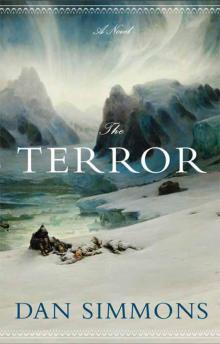 The Terror
The Terror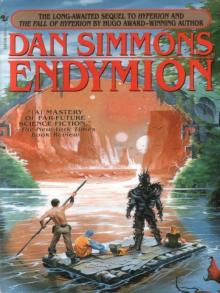 Endymion
Endymion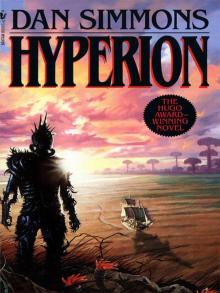 Hyperion
Hyperion The Crook Factory
The Crook Factory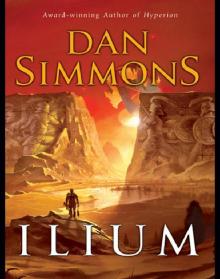 Ilium
Ilium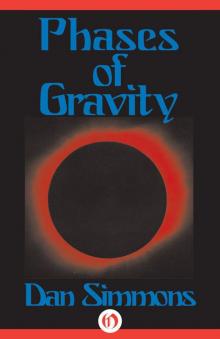 Phases of Gravity
Phases of Gravity Hardcase
Hardcase Fires of Eden
Fires of Eden Children of the Night
Children of the Night Muse of Fire
Muse of Fire Drood
Drood The Fifth Heart
The Fifth Heart Carrion Comfort
Carrion Comfort The Hollow Man
The Hollow Man Summer of Night
Summer of Night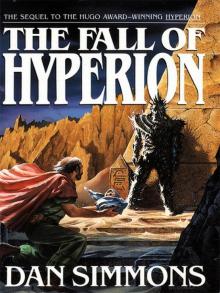 The Fall of Hyperion
The Fall of Hyperion Black Hills
Black Hills A Winter Haunting
A Winter Haunting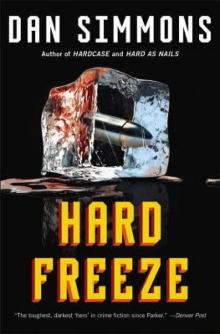 Hard Freeze
Hard Freeze Prayers to Broken Stones
Prayers to Broken Stones Hard as Nails
Hard as Nails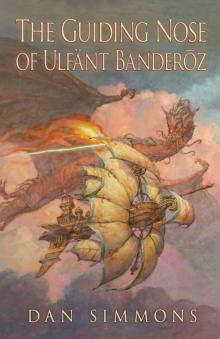 The Guiding Nose of Ulfant Banderoz
The Guiding Nose of Ulfant Banderoz The Rise of Endymion
The Rise of Endymion Orphans of the Helix
Orphans of the Helix Lovedeath
Lovedeath Olympos
Olympos Darwin's Blade
Darwin's Blade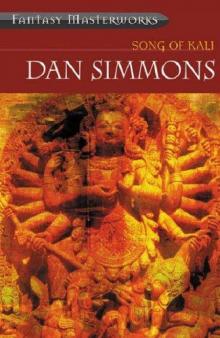 Song of Kali
Song of Kali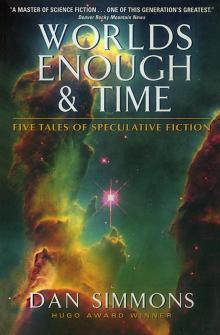 Worlds Enough & Time: Five Tales of Speculative Fiction
Worlds Enough & Time: Five Tales of Speculative Fiction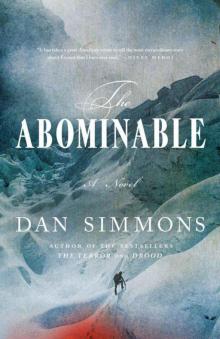 The Abominable
The Abominable The Death of the Centaur
The Death of the Centaur Hard as Nails jk-3
Hard as Nails jk-3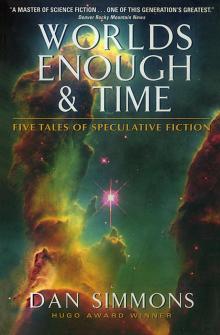 Worlds Enough & Time
Worlds Enough & Time Joe Kurtz Omnibus
Joe Kurtz Omnibus The Hyperion Cantos 4-Book Bundle
The Hyperion Cantos 4-Book Bundle Rise of Endymion
Rise of Endymion Hard Freeze jk-2
Hard Freeze jk-2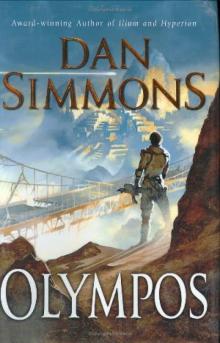 Olympos t-2
Olympos t-2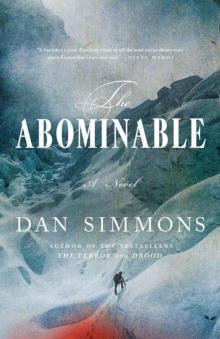 The Abominable: A Novel
The Abominable: A Novel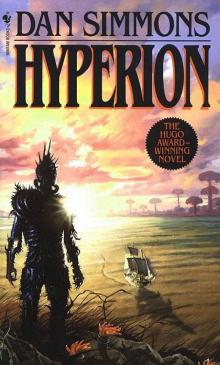 Hyperion h-1
Hyperion h-1 Remembering Siri
Remembering Siri Black Hills: A Novel
Black Hills: A Novel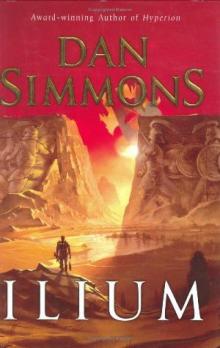 Ilium t-1
Ilium t-1 Hardcase jk-1
Hardcase jk-1 Hyperion 01 - Hyperion
Hyperion 01 - Hyperion